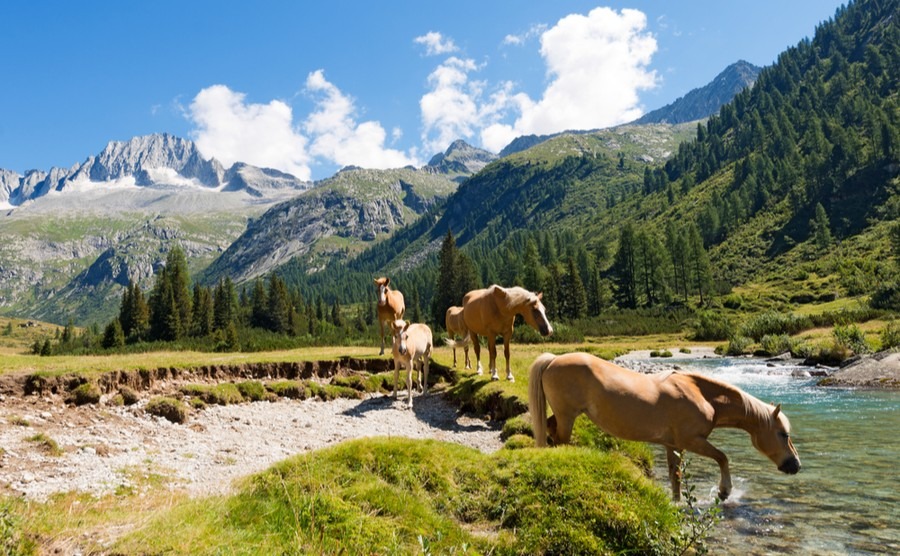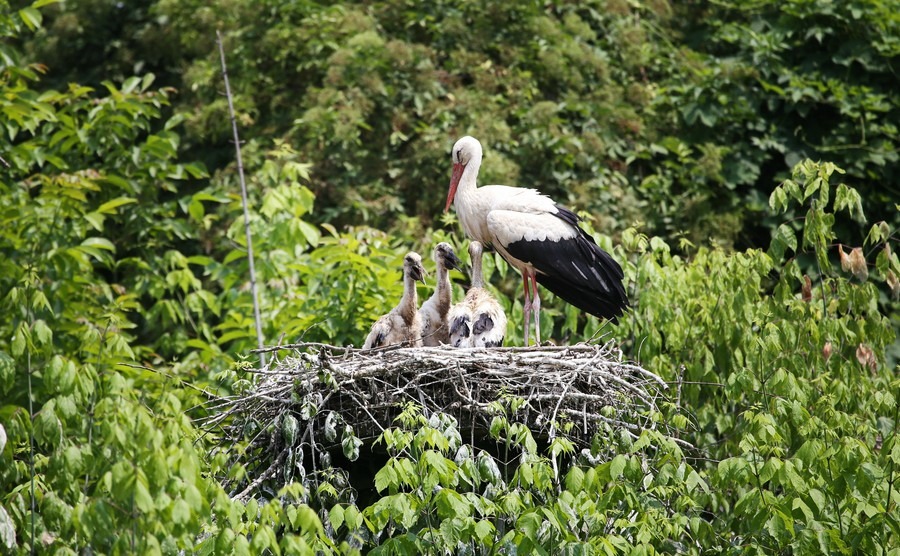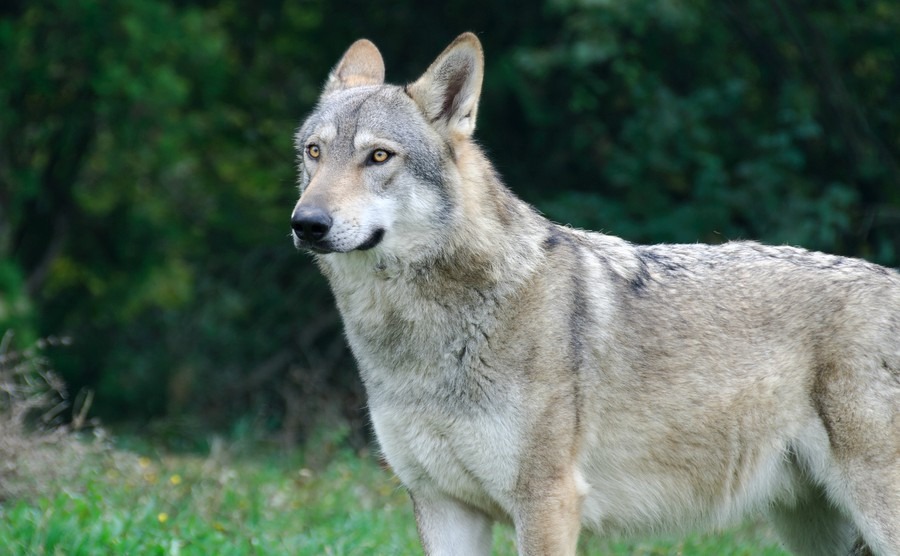You may have seen a gecko or a cicada in Italy, but have you seen a bear or wolf?
Marking United Nation’s World Wildlife Day last week, made me think about the animals and birds in this beautiful country. During my first year living in Italy I saw hares, rabbits, quail and pheasant, but I haven’t seen many of these since and I want to play my part in protecting the locally endangered wildlife. As we keep hunters out of our land it has become somewhat of a sanctuary for birds, and we live with the constant sound of bird song.
Find homes in Italy via our property portal.
As well as the many sparrows, which constantly try to make nests on beams under our veranda, there are magpies, wood pigeons, doves, warblers, wagtails, owls, bats and kestrels, and we get annual visits from robins, black redstarts, starlings, swallows, herons and the beautiful Hoopoe bird. We also see the occasional hedgehog, fox, field mouse, vole and, of course, the cicadas that always add their chattering sound to early summer.
During our own house renovation, we left ledges for nesting, rocks for frogs and lizards to hide under and holes in the stone for bees and geckos
Lipu
Lipu is the association for nature conservation, the protection of biodiversity and the promotion of ecological culture in Italy. It manages 30 reserves, and rescues wild animals in distress. Birds are the symbol of Lipu. As they say “Their presence, the songs, the flights, the colours, represent the wonderful hope of a better world.” Lipu is encouraging homeowners to consider how they can help local wildlife. Not all house buyers consider when they begin building or renovating a property that buildings can be a refuge for wildlife. During our own house renovation, we left some ledges for nesting, rocks for frogs and lizards to hide under and holes in the stone for bees and geckos. After all, it was their home before it was ours.
Some wild animals in Italy are seen even less frequently and can only be spotted in certain areas. Here are six of them:
Wild Boar
The Italian wild boar or “cinghiale” is well known in Tuscany, especially in Maremma, but can also be found across other regions. There are thought to be over 200,000 of them in Tuscany alone. Weighing between 50 to 180 kg they have a big appetite for berries, roots, tubers, acorns, beech nuts, fruits, snails, worms and birds eggs, and can also cause damage to agriculture, which doesn’t please vineyard owners. At certain times of year they can be hunted and there are special Tuscan dishes that include Wild Boar meat, these can be tasted at one of the many food festivals that are held throughout the year. Your best chance of spotting a wild boar is when driving along a winding country road at dusk. Look for a blackish-grey back, with a slight bristly ridge, and long snout hiding in the undergrowth. Don’t get too close if it is a mother with young.

Horses in the National Park of Adamello Brenta
Wild horses
The Giara di Gesturi stretches over some 45 square kilometres in central-southern Sardinia. It is populated by several hundred wild Giara horses, which run free through the open plateau and drink from the rain water ponds. They are medium height with a bay to dark brown coat. Their large heads resting on a strong neck with a long thick mane.
Nobody knows for sure for how long they have lived in this area of the island: some say since the Neolithic Age, others since the Phoenicians imported them (between the 9th and the 3rd century BC). They do have owners, but these are individuals and the Equestrian Institute of Ozieri, whose interest is purely in preserving them. The horses are left to run free and although they will live happily alongside other animals they are wary of people.

White stork with babies in Racconigi, Piemonte (MikeDotta / Shutterstock.com)
Storks
While living in Italy I have been lucky enough to see storks inflight as they migrate in the spring. There are historic records of storks nesting on the great buildings of Ancient Rome and despite a decline in the 15th century they returned once more to Italy in the early 1950s. In 1985 Lipu opened the first stork centre in Racconigi, Piedmont and since the installation of safe nesting platforms over 280 storks have been born in Calabria. The white storks now nest in Piedmont, Lombardy, Veneto, Friuli-Venezia Giulia, Emilia-Romagna, Tuscany, Campania, Calabria, Puglia, Sicily and Sardinia with around 200 stable breeding pairs monitored by volunteers. To see a stork in Italy, look out for Stork Day events organised by Lipu in the springtime. There are more interesting stork facts on their website.
Bears
A fairly small number of Brown Bears can be found in Trentino and the region of Abruzzo. In fact, the brown Marsican bear is the symbol of the Abruzzo National Park.
It is a subspecies, which is genetically different from alpine bears and endemic to Central Italy. There are thought to be about 40 of them living in the park. Most of their diet is vegetation but they will also eat insects, larvae, honey and small animals. Although their eyesight isn’t great they have excellent hearing and sense of smell. They can live for between 35-40 years and reach a weight of 150kg. In winter, they lie dormant in their den only coming out when they sense it is a fine day, a habit some expats also enjoy.

Italian wolf in Murazzano
Wolves
According to legend, wolves played an important part in the birth of Rome, and there are still hundreds roaming the country 2,700 years later. The Italian wolf is a subspecies of the grey wolf. The last survey conducted by ISPRA, showed that there were probably 70-ish in the Alps, more than a thousand in the north-central Apennines, and a couple of hundred in the southern Apennines. They are difficult to spot as they are nocturnal in their habits, and during the day they retreat to the wildest and most unreachable places. Their diet is made up of wild boar, deer and rodents and they can weigh up to 40 kilograms. You can find more details on the website of The Abruzzo National Park.
There are more than a thousand wolves in the north-central Apennines, and a couple of hundred in the southern Apennines
Flamingos
Flamingos can be seen mostly in Tuscany, Puglia, Emilia-Romagna and Sicily where they frequent coastal wetlands, lagoons, saltpans and ponds. The rich nutrients in the algae, small molluscs and crustaceans, are filtered up by special gills in the birds’ beaks. They nest in colonies on low muddy banks surrounded by water. Though it can be difficult to get close to them they are easily visible due to their large size (over a metre high with a wing span of over two metres) and recognizable with their unmistakable silhouette (long legs and neck and large curved beak) as well as their beautiful colouring.
The future of all of these wild animals and birds depends on their habitat being left undisturbed and them being left in peace to breed, away from human interference, especially hunters. Thanks to the many Nature Reserves across Italy they have every chance of increasing their numbers and interested visitors have the opportunity to see them on guided walks.

The process of buying property in Italy is significantly different from here in the UK. This is why we’ve created our completely free Italy Buying Guide, to provide those dreaming of a new life in Italy with all of the practical, legal, and financial information needed to help them realise that dream.










